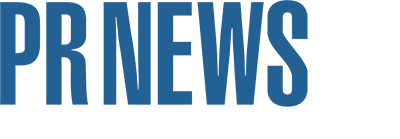Campaign: 25th Anniversary and Brand Launch
Winner: Susan G. Komen for the Cure & Weber Shandwick
In its 25 years of existence, Komen has positively impacted millions of women affected by breast cancer, but, as its 25th anniversary approached, the nonprofit wanted to
celebrate its success while re-launching its brand to stay relevant in an evolving marketplace. The latter goal was deemed necessary after an in-depth audit of the Komen brand
revealed that the organization represented too many voices, which confused potential activists.
Clarifying Its Point
Komen execs teamed up with Weber Shandwick to re-launch the brand to the media and, in turn, increase awareness of its mission. Its 25th anniversary proved to be a natural
segue. First, though, the team needed to pinpoint the precise brand identity the organization would embody. The natural answer was Susan G. Komen, the sister of Komen's founder
who died of breast cancer at the age of 36. Her name was added to the nonprofits moniker, as was "for the cure" - a tagline that represented Komen's most recognizable brand asset,
the Race for the Cure fundraising series.
Hello My Name Is
With a revitalized name - Susan G. Komen for the Cure - the executives could begin their media outreach. Strategies included:
-
Fundraising: The team developed a Promise Ring to symbolize Komen's promise to fight breast cancer and made them available online.
-
Celebrity Endorsements: Komen engaged celebrities as brand ambassadors during a private Critics' Choice awards event.
-
Media Outreach: By offering the Associated Press an exclusive on the anniversary and brand re-launch, the team guaranteed widely distributed coverage.
-
New Activists: Komen leveraged the power of social media to receive activists
via a viral marketing campaign that consisted of an e-mail component that
drove traffic to Komen's interactive microsite, http://www.25komen.org,
as well as video vignettes of breast cancer survivors.
The outcome of the initiative was extreme: The promise ring sales generated more than $300,000 in revenue to date, and the AP article alone reached more than 130 million readers.
Plus, one week after the anniversary and brand announcement, Komen.org reported a 20% increase in traffic to its site. While it certainly didn't eradicate breast cancer, Komen can
certainly close out its 25th year with a feeling of accomplishment - and a brand new name.
Honorable Mentions
Jackson Spalding, Atlanta Symphony Orchestra: A Crescendo of Awareness--To publicize its annual Decorator's Show House & Gardens, Atlanta Symphony Orchestra partnered with
Jack Spalding to promote the event. The campaign focused on the idea-side of the shows, reminding potential visitors that it would feature unique ideas from skilled designers.
AAA of Northern California, Nevada and Utah: Tahoe Wildfires--Simultaneously helping its members fill out insurance claims and raising its own awareness, AAA combined tips
after the Tahoe Wildfires with mentions that they had also provided tips as recently as five days before they ignited. The news addressed the current crisis and, in potential
customers' eyes showed AAA as source of aid.
Sacramento-Yolo Mosquito and Vector Control District: FIGHT the BITE!--Sacramento-Yolo Mosquito and Vector Control District had to rethink their outreach program when spraying
for West Nile due to negative press. Their solution was to reach out more aggressively, actively buying advertising space and sending out information, making it far easier for
people to understand why the spraying is needed while easing their safety concerns.
M Booth & Associates, Robert Wood Johnson Foundation Innovators Awards at Johns Hopkins: Extinguishing Big Tobacco's Ventilation Claims--To push smoking bans as necessary
for the prevention of second-hand smoke, M Booth concentrated on the oddest aspect of their study: that non-smoking sections of restaurants had higher second-hand smoke levels
than the smoking sections. Concentrating on this garnered media and public attention far beyond what a standard study would normally elicit.
MWW Group: Breaking the Cycle of Poverty by Eliminating NTDs--Helping gain attention for tropical diseases, MWW focused on the fact that their debilitating effects are a major
part of what keeps third world countries in poverty. By focusing on the human side of the disease rather than the sterile science that, while important for curing it, doesn't
attract much media attention, the program generated millions of media hits.
JohnstonWells Public Relations & PeaceJam: A Global Call to Action--JohnstonWells increased awareness of PeaceJam's conference by pitching tailored stories to individual
reporters. By taking the time and effort to make sure each release was relevant to its target, they were able to secure more coverage than a blanket letter to a larger number of
media outlets would have elicited.
Caron Treatment Centers, Edelman: Drugs and Alcohol Popular with Some Teens on Online Message Boards--Helping parents and teachers learn that the Web is a common place for
teenagers to get information about drugs and alcohol, Edelmen and Caron Treatment Centers conducted a study and released a preview of the results in USA Today. By focusing on such
a widely read publication, they were able to draw a large amount of attention to their work for a comparatively small cost.
